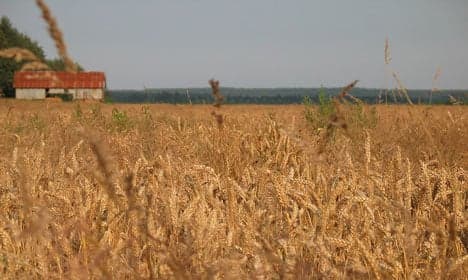Danish wheat quality at an all-time low

Agriculture lobby says that a limit on fertiliser use has led to the steady decline of Danish wheat, culminating in this year's record poor harvest. The quality of Danish wheat has never been worse, according to analyses of samples from this year’s harvest. Studies carried out by the Danish Pig Research Centre (Videncentret for Svineproduktion) show that the grain protein content, wheat’s most important quality indicator, has dropped to 8.4 percent. That represents the lowest protein content ever. According to the Danish Agriculture and Food Council (Landbrug & Fødevarer), the quality of Danish wheat has been on a steady decline since the introduction of fertiliser limits in the 1990s. “The Danish rules mean that we can’t give the grain the amount of fertiliser that the plants actually need. That results in a gradual depletion of the ground’s nitrogen reserves, thus impoverishing the soil. As a consequence, the quality gets lower and lower,” council spokesman Torben Hansen told Jyllands-Posten. The council points out that while the protein content in Danish wheat has dropped from around 11 percent before the introduction of fertiliser limits to the current 8.4 percent, across the border in Germany protein contents have remained unchanged and yields are up. The food and agriculture minister, Dan Jørgensen, said the government would take a look at changing the rules on fertiliser use. “In practice, it could mean that farmers could fertilise more on robust soil but less on more vulnerable soil,” he told Jyllands-Posten. Comments
See Also
The quality of Danish wheat has never been worse, according to analyses of samples from this year’s harvest.
Studies carried out by the Danish Pig Research Centre (Videncentret for Svineproduktion) show that the grain protein content, wheat’s most important quality indicator, has dropped to 8.4 percent. That represents the lowest protein content ever.
According to the Danish Agriculture and Food Council (Landbrug & Fødevarer), the quality of Danish wheat has been on a steady decline since the introduction of fertiliser limits in the 1990s.
“The Danish rules mean that we can’t give the grain the amount of fertiliser that the plants actually need. That results in a gradual depletion of the ground’s nitrogen reserves, thus impoverishing the soil. As a consequence, the quality gets lower and lower,” council spokesman Torben Hansen told Jyllands-Posten.
The council points out that while the protein content in Danish wheat has dropped from around 11 percent before the introduction of fertiliser limits to the current 8.4 percent, across the border in Germany protein contents have remained unchanged and yields are up.
The food and agriculture minister, Dan Jørgensen, said the government would take a look at changing the rules on fertiliser use.
“In practice, it could mean that farmers could fertilise more on robust soil but less on more vulnerable soil,” he told Jyllands-Posten.
Join the conversation in our comments section below. Share your own views and experience and if you have a question or suggestion for our journalists then email us at [email protected].
Please keep comments civil, constructive and on topic – and make sure to read our terms of use before getting involved.
Please log in here to leave a comment.